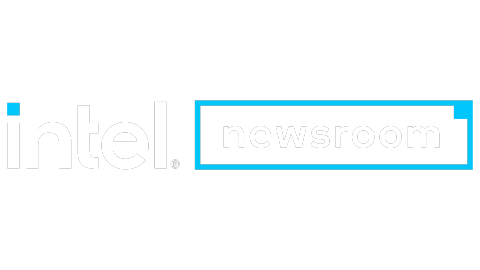What’s New: Intel is committed to fostering an open ecosystem, including technical contributions to many open source projects that are making direct real-world impacts. One example is GROMACS, a molecular dynamics package designed for simulations of proteins, lipids and nucleic acids used to design new pharmaceuticals. Recently released GROMACS 2022, developed using SYCL and oneAPI, exhibits strong performance running on multiple architectures, including Intel Xe architecture-based GPUs.
“GROMACS is one of the world’s most widely used open source molecular dynamics applications, and it's easy to see why. The simulations we can conduct with the application grants us better understanding into things as small as the proteins in our bodies to as large as the galaxies in the universe. Most notably, our work with GROMACS – developed and optimized with oneAPI – allows Intel to have a hand in significant advances in drug discovery and expands GROMACS open development across multiple compute architectures. And this is all while collaborating with the open source community that we so greatly value.”
Why It Matters: GROMACS’ molecular dynamic simulations, which are powered by oneAPI, contribute to the identification of crucial pharmaceutical solutions for conditions like breast cancer, COVID-19, Type 2 diabetes, and others, along with projects such as the international distributed computing initiative Folding@home. In modern drug discovery, molecular dynamic simulations are applied widely and successfully. These simulations provide researchers with the structural information on biomacromolecules needed to understand the structure-function relationship that guides the drug discovery and design process. The application of computational tools like GROMACS to drug discovery helps researchers more efficiently design and evaluate new drugs while conserving resources.
The GROMACS research and development team at Stockholm University and KTH Royal Institute of Technology, directed by biophysics professor Erik Lindahl, leads the GROMACS molecular dynamics toolkit development, one of the world’s most widely used HPC applications. Molecular dynamics is among the most time-consuming HPC applications because it is a very iterative, compute-focused problem. With computation happening billions of times, that means there are millions of lines of code involved.
How It Works: oneAPI, an open and unified programming model for CPUs and accelerators, supports multiple vendors’ architectures, which helped Lindahl and his team expand GROMACS’ support of heterogeneous hardware. This is due to improved productivity using cross-architecture and cross-vendor open standards. Based on these standards, oneAPI programming simplifies software development and delivers performance for accelerated computing without proprietary programming languages or vendor lock-in, while allowing integration of existing code, including OpenMP.
As part of the oneAPI optimization work, Lindahl’s team ported GROMACS’ CUDA code, which only runs on Nvidia hardware, to SYCL using the Intel® DPC++ Compatibility Tool (part of the Intel® oneAPI Base Toolkit), which typically automates 90-95% of the code migration.1,2 This allowed the team to create a new, single portable codebase that is cross-architecture-ready, greatly streamlining development and providing flexibility for deployment in multiarchitecture environments.
“With GROMACS 2022’s full support of SYCL and oneAPI, we extended GROMACS to run on new classes of hardware. We’re already running production simulations on current Intel Xe architecture-based GPUs as well as the upcoming Intel Xe architecture-based GPU development platform Ponte Vecchio via the Intel® DevCloud. Performance results at this stage are impressive – a testament to the power of Intel hardware and software working together. Overall, these optimizations enable diversity in hardware, provide high-end performance, and drive competition and innovation so that we can do science faster, and lower costs downstream,” Lindahl said.
GROMACS accelerated compute was made possible through optimizations using Intel oneAPI cross-architecture tools such as the oneAPI DPC++/C++ Compiler, oneAPI libraries, and HPC analysis and cluster tools. The oneAPI tools are in the Intel® DevCloud, a free environment to develop and test code across a variety of Intel architectures (CPU, GPU, FPGA). Learn more about how the tools were used in the video that follows.
About GROMACS: GROMACS is a versatile package for performing molecular dynamics, using Newtonian equations of motion, for systems with hundreds to millions of particles. GROMACS is primarily designed for biochemical molecules like proteins, lipids and nucleic acids that have a multitude of complicated bonded interactions. But, since GROMACS is extremely fast at calculating the non-bonded interactions typically dominating simulations, many researchers use it for research on non-biological systems, such as polymers.
About oneAPI: oneAPI is an open, unified and cross-architecture programming model for CPUs, GPUs, FPGAs and other accelerators. Based on standards, the programming model simplifies software development and delivers uncompromised performance for accelerated computing without proprietary lock-in, while enabling the integration of legacy code
About Intel’s Work with Folding@home: GROMACS is the bedrock for the Folding@home distributed computing project aimed to help scientists develop new therapeutics for a variety of diseases by simulating protein dynamics. Conducting these challenging molecular dynamics simulations requires a process called strong scaling to successfully simulate atoms during drug discovery research. Intel’s ability to support GROMACS, and in turn Folding@home, with advanced software technology tools and code optimizations help deliver productive, performant heterogeneous programming. This ultimately enables developers and scientists by providing the computing capabilities necessary to complete strong scaling. While the project has not yet adopted GROMACS 2022, plans are to transition code so it is cross-architecture ready in time for upcoming Intel Xe architecture GPUs.
More Context: Advancing GROMACS Using oneAPI | Understanding Our World Through GROMACS | Porting GROMACS across Heterogeneous Architectures | Intel Empowers Developers with oneAPI 2022 Toolkits | Intel oneAPI Toolkits | Intel’s Software Advantage, Decoded
